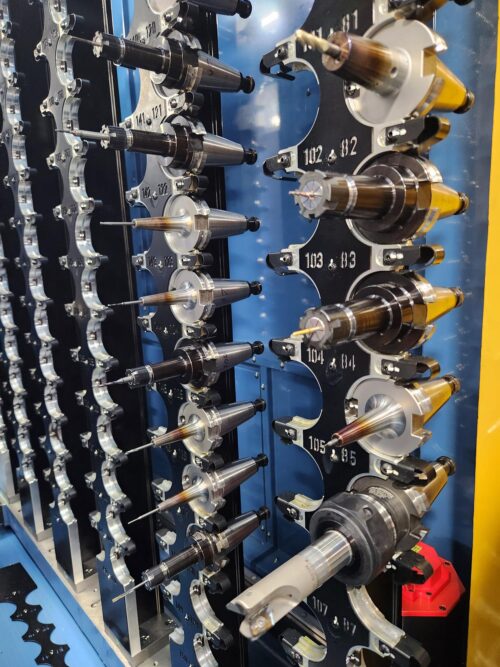At Wagner Machine, we understand that tooling choices play a key role in the success of your manufacturing projects. We often don’t get to share the wealth of tooling insights we’ve gained over the years unless we’re closely involved in the design process. That knowledge can be invaluable when it comes to optimizing your design for manufacturability, improving both efficiency and cost-effectiveness. To help, we’ve compiled four essential tooling tips from our decades of experience that can make a real difference in your next project.
Optimize your Project with these 4 Tooling Tips
1. Design around standard length tooling
Whenever possible, design your parts to take advantage of standard-length tooling. This approach helps you avoid custom tooling costs and speeds up production. For milled features, the length-to-diameter ratio plays a major role in machining times. A standard length tool is anything with a ratio of 3:1 or less. If you can stick to this limit, it will allow the highest machining speeds, best accuracy, and excellent surface finishes. 4-6 x diameter will start to slow things down somewhat, and once the ratio climbs to 9:1 or longer, cutting speeds slow down dramatically, and the surface finish diminishes. Designing within standard tooling limits will help you strike the perfect balance between speed, cost, and quality.
2. If you’re designing for specific tools, make sure to tell us
For many complex machined parts, standard tooling just isn’t an option. Even if your design requires extended tooling, we stock thousands of unique tools in house and we will probably have you covered in most situations under 9:1 length-to-diameter. However, if specialty tools such as key cutters, dovetail cutters, or porting tools are required, let us know the tooling you designed around. Some customers even list special tooling on their prints. When you tell us which tools you’ve designed for, we can work more efficiently to manufacture your parts. Early and clear communication helps ensure your project moves quickly and avoids unnecessary delays. We’re happy to collaborate with you to optimize the manufacturing process, so don’t hesitate to reach out with your tooling preferences or questions.
3. Don’t design internal radii to exactly match a tool diameter
When designing with tooling in mind it’s important to remember that you shouldn’t design internal radii with the exact same radius of the tooling you expect to be used. A good rule of thumb is to make any internal radius around 10% larger than a standard tool size. If you design with .25” internal corner radii, we will likely drop down to a .375” diameter tool to avoid chatter that tends to happen when the geometry and tool radius match directly. If you design with .275” internal corner radii, we will use a .5” tool which is more rigid, and faster cutting.
 4. Tips for hole making
4. Tips for hole making
Holes can be pretty simple, but there are some key points to follow so you don’t accidentally make them complicated (expensive).
- Use a drill chart to specify common hole sizes with a drill in the middle of your tolerance range. If we have to ream, bore, or circle mill a hole it will cost more.
- Drill tapped holes through when possible while still specifying a minimum thread depth. It is easier to tap a through hole than a blind hole because of chip evacuation and coolant flow, but if the threads only need to go through half of the material, let us know.
- For blind-tapped holes, make sure the drilled hole is deeper than your required thread depth by at least 5x the pitch (7x is better). Most taps have a lead of 5-7 turns where the threads will be undersized. Some have as small as 1.5-3 turns of lead, but the less lead, the harder and less reliably the tap will cut. There are also fewer options of short lead taps and the price is generally higher.
- Avoid small intersecting holes – especially if they are threaded!
Talk to Us About Your Project
Tooling technology is constantly evolving, and what was considered custom just a few years ago might now be standard and readily available. Vendors like Harvey Tool offer many options that can be shipped out the next day, eliminating long lead times and opening the door to faster, more efficient production. Staying updated on these advancements can greatly enhance your project’s outcome.
At Wagner Machine, we’re here to help you navigate these decisions and achieve the best results, whether you’re working on a prototype or preparing for large-scale production. Contact us today to discuss your next project!
